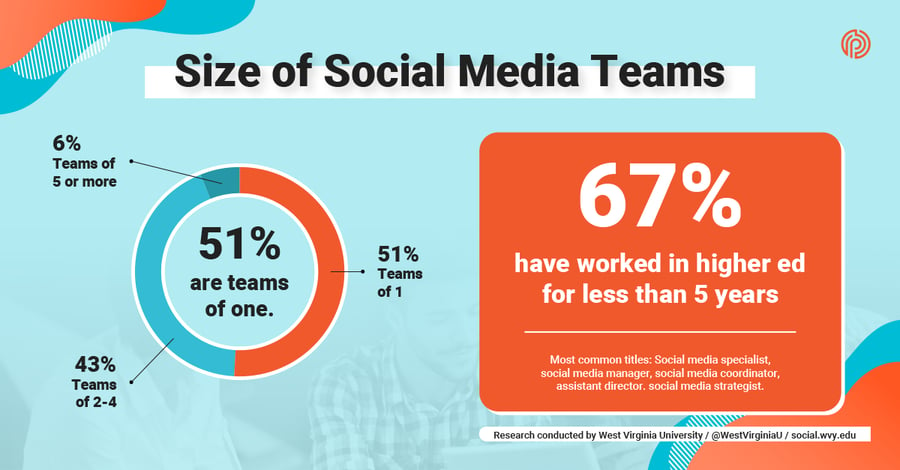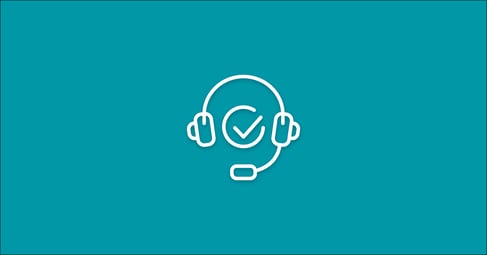
Written By:
Tamara Day
Burnout has become an increasingly common problem for social media specialists in higher education. According to Inside Higher Ed, a number of employees claim that their mental health status has decreased since they started the role, however, there’s very little institutional data to support this.
“I repeatedly talk about the need for institutions to collect their own data around what their employees experienced during the pandemic, how they are feeling now, and what they want moving forward,” says Kevin McClure, associate professor at the University of North Carolina at Wilmington. “I’m just not convinced those efforts are happening though.”
Despite this lack of numbers, social media specialists in higher education are trying to find new ways to avoid burnout and remain motivated. Here’s an overview of what social media burnout is, why it’s becoming a growing problem in higher education, and various ways you can avoid it.
What Is Social Media Burnout?
Burnout is the physical and mental exhaustion of working at a high level. Social media burnout follows this similar logic, but is more directly related with an overload of social content and the responsibility of curating and maintaining it. In higher education, social media burnout is often caused by not having enough time or team members of a marketing team to adequately divide up and complete tasks.
Some other common causes of social media burnout include:
- Lack of high-level support
- Hefty workload
- Poor self-care
- Unclear job expectations
- Lack of work-life balance
If you’re currently experiencing these challenges in your current social media role, here are five ways you can avoid burnout.
5 Ways to Avoid Social Media Burnout
1. Hire Student Workers
If your budget allows, hiring student workers can be extremely beneficial in avoiding burnout. Students who major in fields such as marketing and communications are a great place to start since they are already exposed to this type of work in their current studies.
By relying on student workers to perform repetitive or tedious tasks, social media specialists are able to more effectively prioritize their time. In return, student workers gain valuable experience from this work and may even earn incentives like pay or campus swag.
Some examples of the type of work students can take on include:
- Gathering content
- Emailing students
- Setting up interviews
Since the younger generation is more in touch with technology and social media, students may be in a better position to do more of the heavy lifting for social media. This allows specialists and other marketing team members to focus their attention toward greater projects and tasks for the institution.
“[Student workers] did a lot of content gathering and creation. So I sent them to a lot of events for photo and video needs and had them create TikTok and Instagram content,” says former Social Media Coordinator, Samantha Rivera. “At the time, they didn't have access to the accounts so I would schedule the content for the page, which allowed me to focus on strategy, monitoring pages, scheduling content, and performance reporting.”
2. Change Your Work Environment
The repetitiveness of your work environment can cause you to fall into a boring and constant routine. Waking up at the same time, traveling the same distance, and sitting at the same desk everyday can already be tiring. Allowing for a change in scenery is important for all workers—not only those specific to social media. If employees are allowed to work from different locations, such as in the office, somewhere else on campus, or at home, it could increase their overall creativity and productivity.
Unfortunately, not all social media managers have the ability to work a hybrid schedule. Some institutions and workplaces enforce attendance at a specific time and place. If you fall into this category, consider making a suggestion to higher management.
However, if your role demands for a specific schedule, trying to create a positive work environment can garner the same results. This means creating a culture of respect and trust that is both positive and supportive toward the team as a whole.
3. Repair Team Expectations
While the majority of employers want their team to meet and even exceed their expectations, in most cases overstimulated and overwhelmed employees eventually become burnout in their roles—social media in higher education is no exception. From working beyond the office hours to consuming your weekends, consistently performing at a high level in these roles can be exhausting.
To avoid this constant need to “be on,” try to set clear expectations for both you and your fellow team members. Be sure that everyone knows exactly what is expected of them and what the company goals are. This will help reduce stress and anxiety, and also ensure everyone is working toward the same objective.
In social media specifically, some of these expectations are unattainable, especially when given to one team member. According to a study conducted by West Virginia University, 51% of social media teams are made up of one person, while 43% have 2–4 team members, and only 6% have 5 or more.
This does not promote a strong support system considering one person is tackling a job meant for three. Social media employees in higher education are expected to create, edit, and analyze content seven days a week—sometimes including holidays.

“As a social media coordinator you are always on,” says Rivera. “Meaning even during non-working hours, on weekends or holidays, you have to be monitoring the social media pages for any crisis and be ready to respond. That can be draining.”
Repairing your team's expectations to more manageable ones can lead to a positive outcome. If you are feeling burnt out, it is likely that your coworkers are too. Remodeling your institution’s presumptions of the achievable responsibilities for employees can aid the prevention of burnout and ensure your team members are not set up for failure.
4. Ask for Support
One of the main causes of social media burnout in higher education is allowing employees to overwork, which is largely because there is a lack of support for most team members. However, with the right support social media teams are often set up for long-term success.
“With the proper budget, I think social media roles can be divided into two positions,” says Rivera. “One focusing on content creation and the scheduling of posts. The other focuses on monitoring activity, performance reporting, and overall social strategy based on trends. That way, by sharing the role between two people, you can share the task of always monitoring the pages.”
If your institution does not have the budget for two social media employees—such as a social media manager or coordinator—it doesn’t mean you can’t ask for a different kind of support. Consider seeking out help from coworkers who can lighten the load.
5. Be Aware of Your Mental Health
Since burnout has become increasingly difficult for employers to combat, staying aware of your own physical and mental health is incredibly important.
Seeking out adequate resources and striving toward work-life balance are just some ways you can take your mental health seriously. An article from the American Psychological Association found that, “providing a range of policies, resources and management training that foster a healthy and flexible work culture are fundamental strategies for supporting employees' mental health.” If you are overseeing others, it’s also important to provide these same tools and resources to them to ensure they can do their jobs more efficiently.
Some additional resources that should be accessible to your team members include:
- Training programs
- Industry software
- Passwords and codes to accounts
In addition to providing the tools for success, it’s also crucial to encourage team members to take breaks and have personal lives outside of work. This helps reduce stress and ensures team members perform at their best.
When you are having a stressful week try some of these tactics to shift your mindset.
Decrease Personal Social Media Use
Not using your personal social media as much, or even at all, can provide a much needed break from these platforms. Using social media for personal and work purposes can be excessive and extremely draining. Instead consider journaling, reading a book, or watching your favorite TV show to work a different part of your brain when home.
Avoid Bringing Work Home
Not bringing your work home is an important aspect of a healthy relationship with your work. While this might be difficult if you are working from home either full or part time, it’s important to remember that no one wants a work notification from a coworker at 8:00 PM. Separating yourself from your work responsibilities will allow your mind to relax and properly prepare for the next day.
Stay Organized
Keeping yourself organized is beneficial for many reasons. For one, it keeps you focused and more efficient. An article from the University of Rochester found that, “when you are organized and productive, you can prioritize work and excel, which aids your career progress and success.” Being organized allows you to stay focused and complete tasks on time. This is especially important when working within social media since most deadlines are tight and there is little to no room for error.
One way to do this is by creating a content calendar—a schedule illustrating the planned content for each month. This can assist nearly every social media employee in their preparation, organization, and time management of the institution’s social media content.
There are a few critical elements which should be incorporated into your calendar, including:
- Pre-publishing checklist
- Dates, times, headlines, and platforms of each post
- University specific dates (e.g., holidays, enrollment opening/closing, campus events)
- Post publishing checklist
Prepare for the Worst
Being prepared for the unexpected is incredibly important in social media. Understanding how to respond to a social media crisis is one of the key components of the position. Therefore, being adaptable to that type of situation won’t just save you time, but the school’s reputation as well. Another way to be prepared is a content calendar.
Make Social Burnout a Thing of the Past
There are many ways to avoid social media burnout as a higher education social media manager. By following these tips, you can create a healthy work-life balance and prevent burnout.
Remember to set boundaries, take breaks, delegate tasks, take care of yourself, and seek help if needed. If you can do these things, you will be well on your way to long-term success in your social media role.
Still worried your role is too overwhelming? Download our Social Media Publishing Checklist, which can help you navigate various platforms (e.g., Instagram, Facebook, TikTok, LinkedIn, Twitter, and YouTube) while offering helping publishing and tracking tips that can take your content to the next level.







